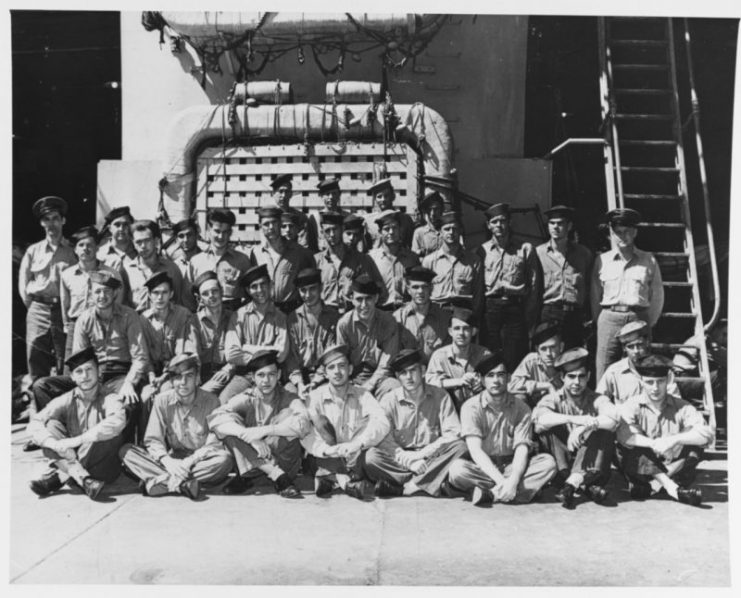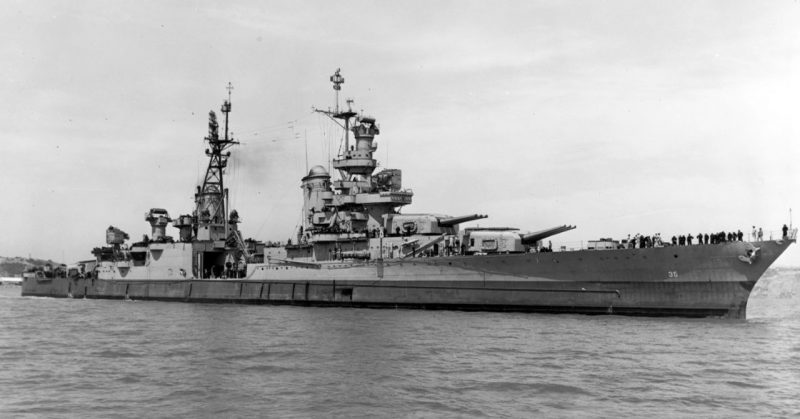The Navy has completed a formal review of the final crew accounting in the World War II loss of heavy cruiser USS Indianapolis (CA 35), officials announced recently.
Details are included in a research paper published March 20 by the U.S. Naval Institute’s Proceedings Today in which Naval History and Heritage Command historian Richard Hulver, Ph.D. collaborated with filmmaker and Indianapolis historian Sara Vladic to share information from their independent research into the matter. The original version of the paper along with additional contextual information on the ship and its history can be found on the website of the Naval History and Heritage Command.
The review concludes the following:
• At the time Indianapolis was torpedoed, there were 1,195 Sailors and Marines onboard (the number was previously believed to be 1,196).
• Although it may never be known precisely how many of the crew survived the sinking of the ship and entered the water, the review concludes 879 Indianapolis Sailors and Marines lost their lives either in the attack on the ship, in the water following the ship’s sinking, or after rescue (the number was previously believed to be 880*).
• The total number of Sailors and Marines who survived the sinking of the ship was 316 (this is the number always maintained by the Navy).

Hulver’s review was ordered by Sam Cox, Director of the Naval History and Heritage Command (NHHC) in the wake of the discovery of the ship’s wreck by a research team led by entrepreneur and philanthropist Paul G. Allen last summer. After the discovery of the ship’s wreck, the long-held belief by some reemerged that a flaw existed in the Navy’s official, final crew accounting conducted immediately following the ship’s loss. It was believed by some that the final number of Sailors and Marines who survived was 317 not 316 as the Navy, the Court of Inquiry, and the ship’s commanding officer Capt. Charles McVay stipulated Aug. 8, 1945.

Current NHHC staff had not seen research that pointed to 317 survivors, although there was discussion in various articles, including a September 2017 Proceedings Magazine article by Vladic who believed the Sailor who was not accounted for in the Navy’s tally was Petty Officer Second Class Clarence W. Donnor who went on to serve in the Navy until his discharge in July 1946.
As it turns out, she was right and Donnor was the key to the mystery, but not the 317th survivor. The paper by Hulver and Vladic has the full story.

The Naval History and Heritage Command, located at the Washington Navy Yard, is responsible for the preservation, analysis, and dissemination of U.S. naval history and heritage. It provides the knowledge foundation for the Navy by maintaining historically relevant resources and products that reflect the Navy’s unique and enduring contributions through our nation’s history, and supports the fleet by assisting with and delivering professional research, analysis, and interpretive services. NHHC is composed of many activities including the Navy Department Library, the Navy Operational Archives, the Navy art and artifact collections, underwater archeology, Navy histories, ten museums, USS Constitution repair facility and the historic ship Nautilus.

To learn more about USS Indianapolis (CA 35), visit NHHC’s special collection page on the ship.
